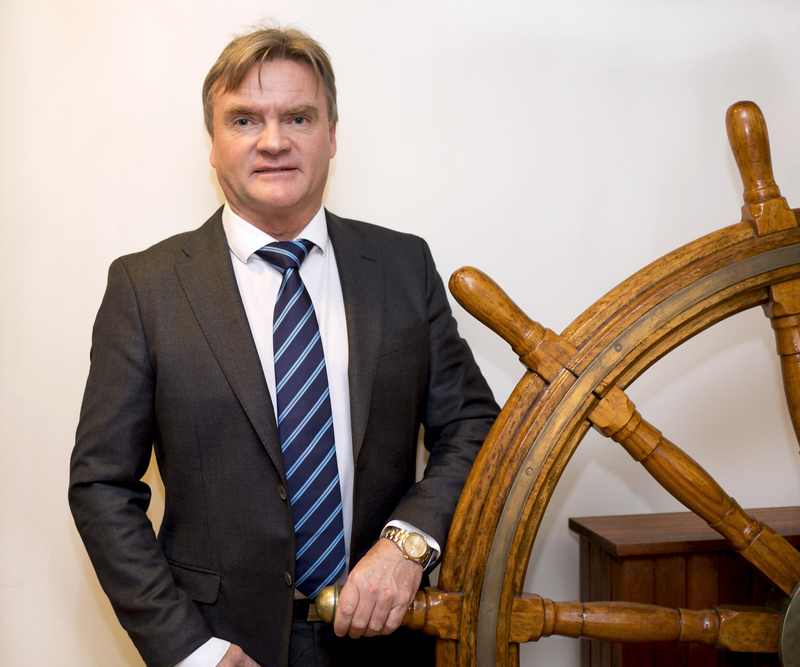Those who have been following the development of sustainable shipping will recognize the UECC name. Those who have been following UECC will know why: with two duel-fuel LNG ships on the water and three battery-hybrid LNG vessels on the way, UECC is making investments that make it possible to see a path to sustainable shipping.
These moves have put UECC far ahead of compliance requirements for emissions reduction. CEO Glenn Edvardsen explains the thinking behind the investments: “We are aware of the climate challenge that the world is facing, and we know it is everyone’s responsibility to try and make a difference. This also means helping others if you can. UECC is trying to provide the possibility for green transport so that our customers can join in and make a difference. That is our motivation. We genuinely want to provide this alternative.”
The first best choice
For UECC, that means that acting now. “We can’t just wait twenty years for the optimal solution,” Edvardsen states. “When we built the dual fuel vessels, we knew that LNG would not be the ultimate future fuel, but it is the best available option now.” UECC is banking not just on LNG as fuel, but also on the infrastructure supporting duel fuel. “We can use LNG, but also synthetic oil or biogas, to mention only a couple of alternatives. The present structure allows for progress in several possible directions.” The same pragmatic thinking applies to the batteries on their new ships, Edvardsen says: “They will not be for pure propulsion, but they will allow us to take the next step, to squeeze even more transport out of the fuel we burn and reduce emissions even further.”
While UECC is confident of its choices thus far, Edvardsen is on guard against inertia. “We know well enough what we have to do, but we don’t want to become complacent. We will continue to try any good option.” Still, he observes, no company can afford to throw money at every new idea. “The interim solution needs to be viable too. There are many decarbonization solutions already available, but they might not be sustainable. Some of the potential solutions can be very expensive, so we need to work at making the smart choices.”
Emissions gaining currency
Edvardsen relates that emissions have become a part of contract negotiations. “Every potential customer sends us emissions paperwork to fill out. They are eager to understand the emissions picture, and they are logging and documenting it for use in meetings and audits. They are feeling the pressure from their own customers and from regulators, so it comes back to us being able to help them,” he says.
“It would not be hard to get them onboard if there were no price tag. We can provide them the opportunity to join us, and we are doing this as competitively as possible,” Edvardsen confirms. But change never comes free: “Everybody has to be willing to contribute. It’s more about sharing the burden. The payoff is being able to lower emissions. That’s what they will achieve.”
Team spirit driving progress
Owners Wallenius Lines of Sweden and NYK of Japan are enthusiastic backers of UECC’s green initiatives. “It is UECC’s mission to be the sustainable leader in the short sea segment. That is the company vision, and our owners are very supportive of this effort,” Edvardsen reports. “Wallenius has a long tradition of taking the lead on sustainable issues. It’s in their DNA, not only this time around but historically. NYK is the same, a big company with strong commitment to Environmental, Social, and Corporate Governance going forward, and they stand fully behind our efforts to reach sustainability. It helps to have such good support. All the sudden there are three of us in the game.”
To compliment their supportive ownership, Edvardsen tells that UECC strives for a proactive, inclusive culture: “Many of our initiatives are bottom-up. Whenever our people see something of interest, they bring it up. We are proud that we can motivate everyone in the UECC organization to take the initiative. We have a team of highly motivated, qualified, dedicated and smart people, and they know we need to make this change together. For us, that’s what makes it fun to come to work.”
The view from in front
Edvardsen notes that UECC continues to build advanced vessels while others in the segment are not building at all. “We take a long-term view on things. We know not everything will pay off tomorrow, but we believe in what we are doing. We accept that the one in front needs to work a little harder. Even if not everyone is following now, we know this is the only way forward.”
He trusts that markets will reward this attitude: “Stakeholders along the whole supply chain have become very well informed. The level of engagement is different today from what it was only a few years ago, and the awareness curve is steep. People understand that someone has to make the first move if we are going to see real change.”
A call to action
“A lot has happened with sustainability in a little time, but we are not there yet. We have no option but to continue, and the industry needs to embrace this,” Edvardsen maintains. “Shipping has been talking about the green shift for years. Now we have to put words into action. If we don’t make a change now it will be too late.”
While acknowledging the urgency of action, he cautions against making perfect the enemy of the good: “It’s important not to try and do everything at once. We have to find motivation in doing what is possible now and building on that. The biggest mistake you can make right now is not doing anything.”
All news





